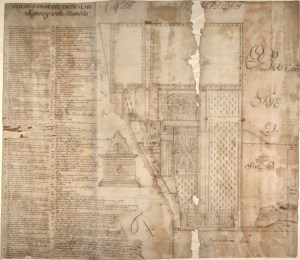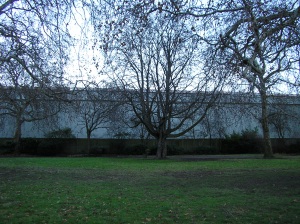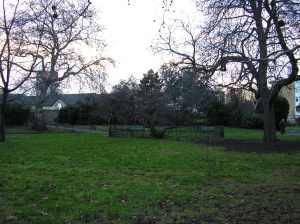For many years after his death in 1706, John Evelyn’s mountain of manuscripts, letters, and other papers were kept at his family house in Wotton, Surrey, but now they are in the care of the British Library. Among them, as I soon found to my great delight, is an incredibly detailed plan and description of the garden, drawn in 1653, when he was first planning and laying out the grounds of Sayes Court.
Evelyn was a gifted draughtsman, and his plan is meticulously drawn to scale.
As I pored over this incredible plan, (copyright the British Library) it almost felt like Evelyn had somehow foreseen that his garden would one day vanish, and done his best to ensure that an accurate record of it, at least, would survive. Of course, that isn’t the ostensible reason that he drew it – it was to show his father-in-law Richard Browne, a keen horticulturalist who was then on diplomatic posting in Paris, how Evelyn was transforming the estate that he took over when he married into the family.In the key to the left of the plan, (copyright the British Library) a full one hundred and twenty six items shown on the plan are listed, including every room in the house and its outbuildings, every feature of the gardens with dimensions and planting information, and even aspects of the land prior to Evelyn’s alterations, of a kind to gladden the heart of any archaeologist. (Take for example, item 48. “That tract of pricks shew where formerlie the row of great elms grew towards the Pingle, which I feld filling the hollow to accommodate the orchard”.)
One of the first conclusions I came to from examining it is that the modern park is very much smaller than the original garden. So, has the dockyard that borders the park to the east, currently covered with the huge shed-like modern warehouses of Convoys Wharf, encroached over time onto the former area of Sayes Court?
In my next post, I’ll reveal how Evelyn’s map really does work like a marvellous key that lets us enter the seventeenth century landscape.


